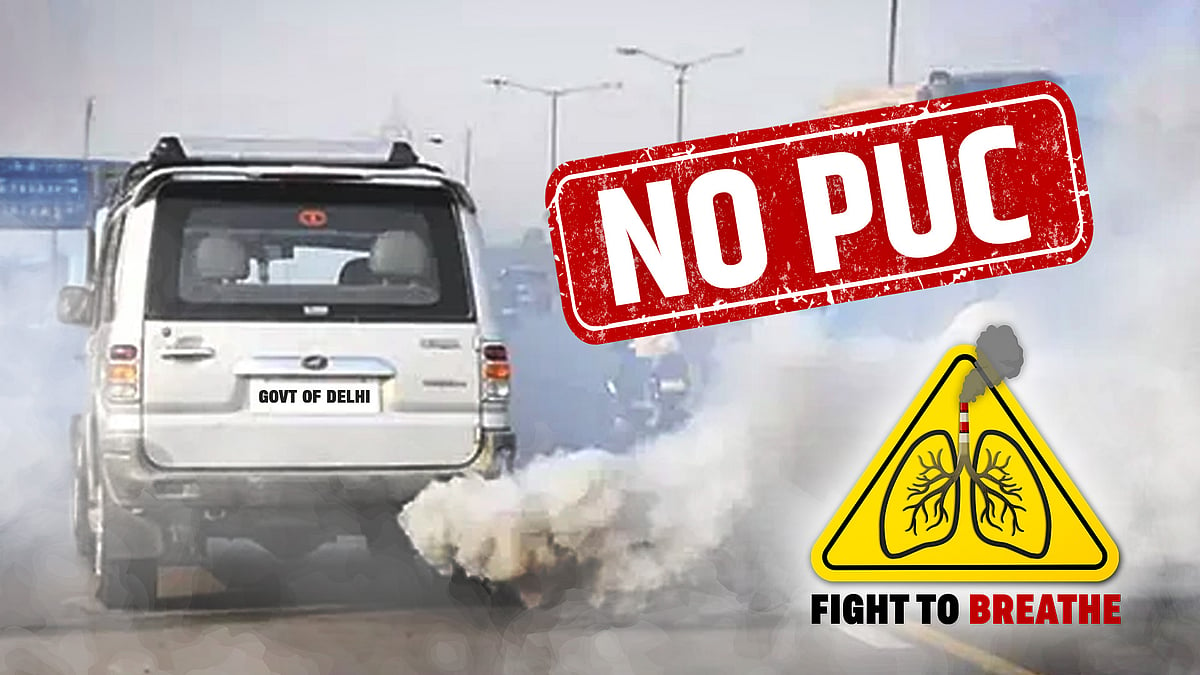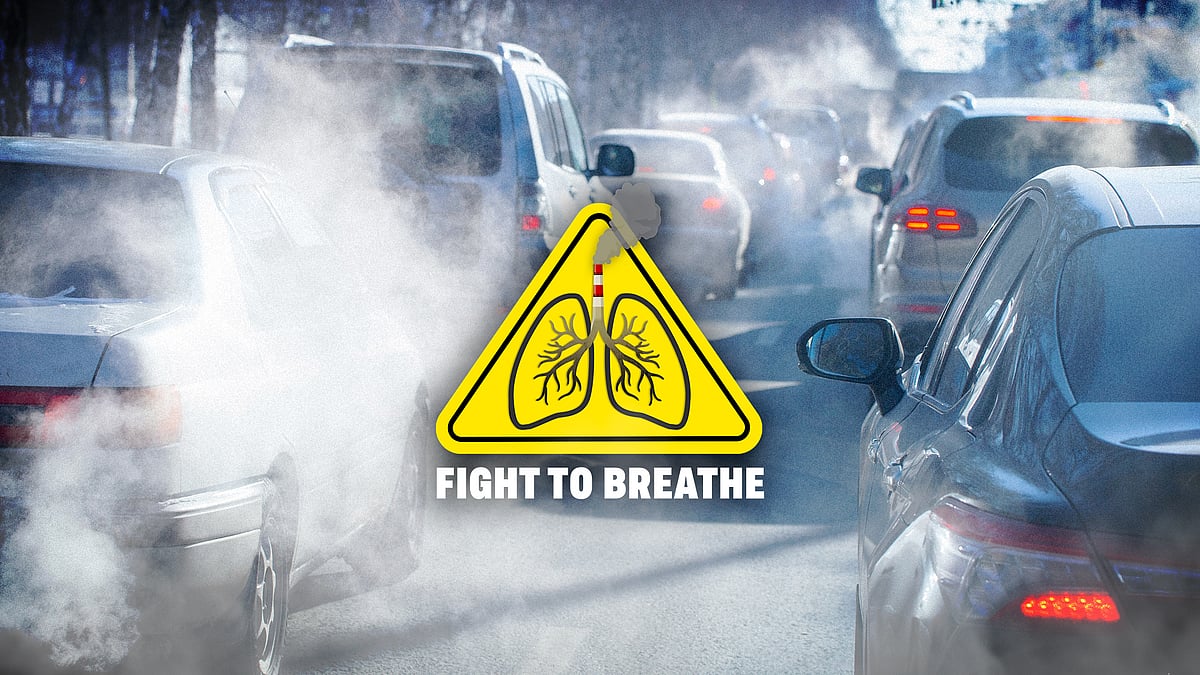Delhi’s war on old cars: Great for headlines, not so much for anything else
While it has now been scrapped, this was not the layered policy that the capital really needs.
Drawing room conversations often reveal what’s truly on people’s minds.
I’ve been in Delhi for the past two weeks, a bit more social than usual, and I’ve overheard several discussions about the fuel ban. Though now scrapped, the government had initially said that starting July 1, 2025, diesel vehicles over 10 years old and petrol vehicles over 15 years old will no longer be allowed to refuel in the city. Such vehicles are classified as end-of-life vehicles. In fact, a 2018 Supreme Court ruling had already prohibited petrol cars older than 15 years and diesel vehicles older than 10 years from operating on Delhi’s roads. But the implementation was weak.
The fuel ban was seen as a move to provide more teeth to enforcement. Monetary fines and other measures have been put in place to make it work. In the months to come the ban will come into force across the National Capital Region.
The logic was that older vehicles contribute significantly to Delhi’s pollution. Hence, the ban. A piece in the Indian Express suggests that between 83,000 and four lakh vehicles registered in Delhi may have crossed their end-of-life limits but continue to operate. In comparison, the total number of actively used vehicles in Delhi is estimated to be between 52 lakh and 68 lakh.
This raises several issues which need to be talked about.
1) There is a sense of unfairness built into this ban. Not every end-of-life vehicle pollutes. The trouble is that the system as it exists doesn’t really work well when it comes to differentiating between polluting vehicles and non-polluting ones. An October 2023 news report in the Hindustan Times pointed out:
“It appears to be easy to obtain a pollution under control (PUC) certificate for vehicles, even if they exceed emission limits. An investigation found that four out of five PUC centres did not conduct the necessary checks mandated by the Delhi transport department.”
If the system operated properly, it would have been possible to move towards a polluter pays kind of system rather than the blanket ban kind.
Nonetheless, to build a system which is able to differentiate correctly would take time, thinking, attention and perseverance. It’s easier to just introduce a blanket ban. Which is primarily what the government and its institutions have done here.
2) It is important to look at this issue from the perspective of what the economists refer to as the ‘tragedy of the commons’, which basically explains why interests of individuals and the groups they make up, may diverge.
Let’s understand this through the example of fishermen and their fishing, something I had written about in a piece I wrote for the Mint newspaper in 2023. As Robert H Frank writes in The Darwin Economy: “Fishermen don't deplete their fisheries because they're stupid. It happens because no single person's decision to enter the fishing industry has any measurable effect on the ultimate outcome…Each potential fisherman cares only about the earnings from the fish he expects to catch. He has no reason to consider the fact that his entry would reduce the number of fish caught by existing fishermen.”
What makes sense at the individual level may not work at the aggregate level. How does this apply in the case of Delhi’s old cars? Let’s say someone doesn’t take care of their car. This car pollutes the environment. But at its individual level, it barely adds to the overall pollution. So, this car owner has no real incentive in maintaining their car and ensuring that it does not pollute.
Also, the pollution under control certificate seems to be easily available even when a car shouldn’t get one. Further, even if the owner decides to maintain their car they will barely make any difference to the overall pollution. So, many owners end up not maintaining their cars, leading to excessive pollution.
This tragedy of the commons makes pollution a difficult problem to tackle economically. Given this, as Richard Thaler and Cass Sunstein write in Nudge: “The standard remedy is coercion, agreed to by all.” Which is precisely what has happened in this case. Vehicles over a certain age have been categorised as end-of-life irrespective of how well they have been maintained.
Further, given the rentier nature of the government, a blanket ban goes in line with that. It can turn into another money making enterprise.
3) It’s always possible to sell end-of-life vehicles to people in other states outside the National Capital Region. In case the vehicle is polluting excessively, it will simply move the pollution elsewhere. What can be done about this needs more thought as well.
4) A conspiracy theory that has emerged is that the car lobby is behind this move. In 2024-25, the domestic car sales stood at 4.3 million units, just about two percent more than 2023-24. This slow growth came after a pretty robust growth in the post pandemic years before 2024-25. Given this slow growth, the belief seems to be that car companies have lobbied for this fuel ban making many cars unusable.
Now, I have no way of verifying this, but economics tells us there is a little more to it than just this.
5) The end-of-life vehicles, irrespective of the state they are in, will become unusable in Delhi. Of course, owners can always take the risk of using them and managing the rent-seeking system. But there will be individuals out there who won’t want to do that. Such individuals will buy new vehicles.
This benefits car companies, suppliers, and dealers. It will also help banks and non-banking finance companies (NBFCs), which will give out car loans to finance these cars. Both the state government and the central government will benefit because the buyers will have to pay different taxes before being able to drive their cars.
In the end the economy as a whole will benefit. Or so it seems.
6) The trouble is that this argument does not take the opportunity cost into account. As John Quiggin puts it in Economics in Two Lessons: “The opportunity cost of anything of value is what you have to give up so that you can have it.” The point being that most people only have so much money going around. And if they are forced to buy a new car they will not end up buying something else for which they had allocated that money for.
So, while the car companies might benefit, the industry and the economy as a whole won’t.
Of course, it is difficult to figure out and state clearly which are the sectors which will lose out because of this. Hence, while the conspiracy theory argument might make sense, those saying that it will benefit the economy as a whole – particularly the WhatsApp warriors – have clearly not thought it through.
7) It needs to be mentioned here that the production of newer vehicles also causes pollution. The power needed in the car plants and plants supplying to these plants may be produced by burning coal. Or the production of steel that goes into the making of every extra car sold because of this ban, will also pollute. Of course, this pollution will happen somewhere else and not in Delhi. Indeed, this indirect pollution is hard to measure and easy to ignore.
8) Indian politicians remain reluctant to use the public transport option to lessen pollution. The Delhi Metro is bursting at the seams during peak hours, despite being India’s best metro system. The Delhi Transport Corporation which runs the buses in the city, has been struggling for many years.
Also, old cars are only one part of Delhi’s pollution problem: construction dust, stubble burning, industrial emissions, generator sets and power plants are the others. The city needs a multi-pronged approach to tackle the problem. It also needs to engage more with the governments of neighbouring states.
To conclude, while Delhi’s vehicle ban could have reduced local pollution, its economic and systemic consequences are more complex. It punishes even non-polluting cars, shifts emissions to other states and could distort consumption patterns.
The gains for auto manufacturers and governments may come at hidden costs. A nuanced, data-driven, targeted approach, involving more precision – not a blunt policy instrument – is needed to balance environmental goals with economic fairness.
The city needed a layered policy, one that differentiates between polluters and non-polluters, develops scrappage infrastructure and provides viable public transport alternatives. What it got was a headline-friendly ban.
Vivek Kaul is an economic commentator and a writer.
The other environmental issue that faces India is the disposal of e-waste. But our investigation has unearthed a shady system across multiple states. Your help can help us tell these stories. Click here to contribute.
 While Delhi gasps, is the government driving dirty?
While Delhi gasps, is the government driving dirty? Over 1 lakh vehicles in Delhi got pollution certificates despite high emissions: CAG report
Over 1 lakh vehicles in Delhi got pollution certificates despite high emissions: CAG report